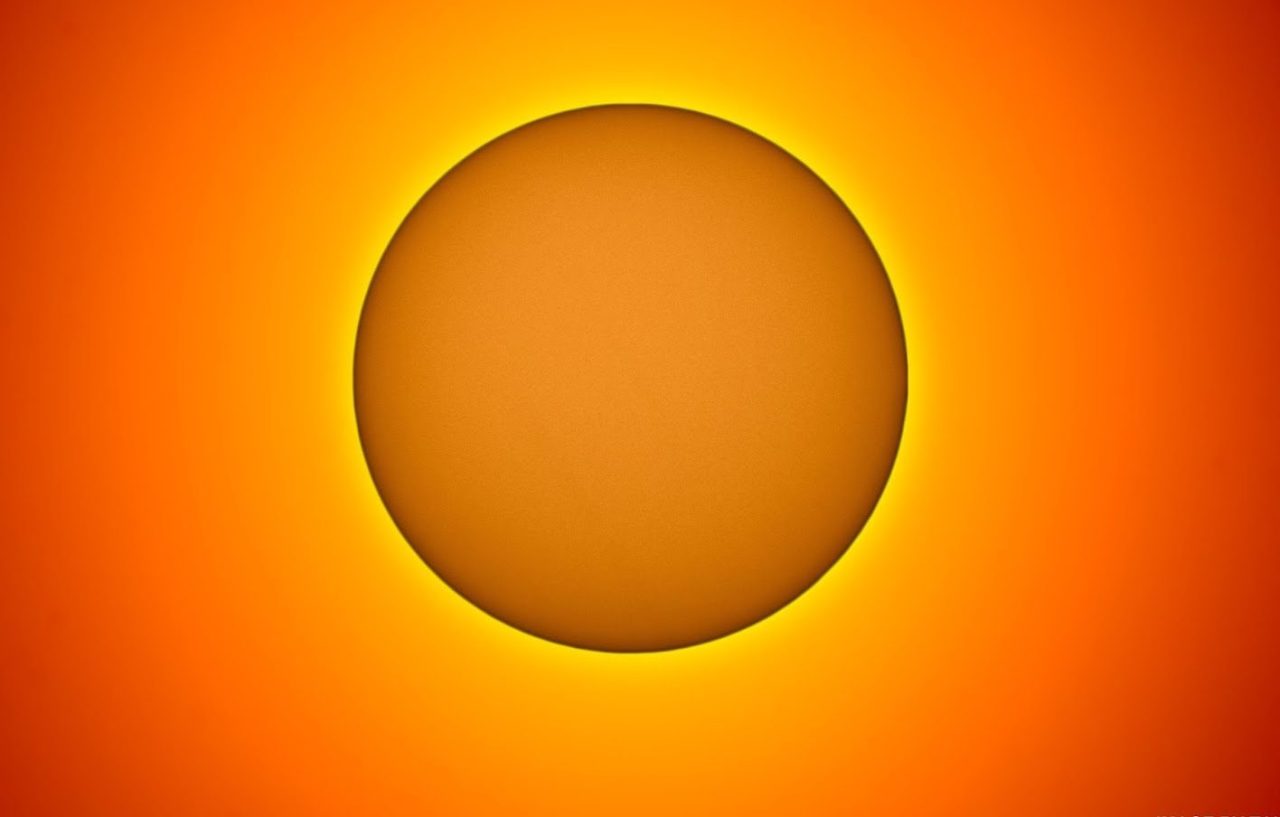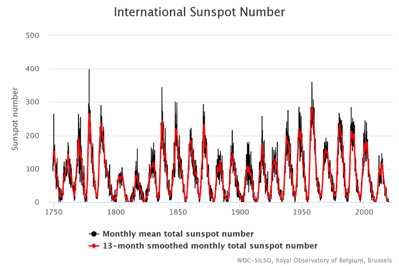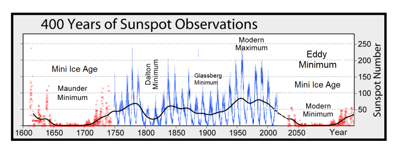
For those of us who believe that the sun controls the earth’s temperature, this is foreboding.
As of Oct 28, the current stretch of days without any observable spots has reached 25, making for a total of 224 spotless days in 2019 so far (or 74%). This means that 2019 has now surpassed the 222 spotless days observed in 2018, with more than 2 months to go.
2019 even looks set to eclipse 2008’s total of 269 spotless days (or 73%), when the Sun had just gone through it’s weakest solar cycle, and consequently deepest solar minimum, of the past 100+ years:

NASA have linked periods of low solar activity to spells of global cooling (here) — but don’t go letting no government agency tell you how it is, go correlate the two yourself using the above ‘International Sunspot Number’ graph.
The Dalton Minimum1790 to 1830 brought with it a period of lower-than-average global temperatures. The Oberlach Station in Germany, for example, experienced a 2C decline over 20 years, which devastated the country’s food production. The Year Without a Summer also occurred during the Dalton Minimum (in 1816). As did crop failures across Eurasia & the Americas, which led to food riots, famine and ultimately the deaths of millions upon millions of people.
That 40-year temperature decline (1790-1830) matches perfectlywith a dip in solar activity.
And so do temperature plunges of the past — preceding the Dalton were the much deeper Maunderand SpörerGrandSolar Minimums.
Taking the Maunder Minimum 1645 to 1715(as we have far more data for it than the Spörer), we see it’s 70-or-so year spell of global cold, crop loss, and famine again correlates neatly with a sharp decline in solar output. During this Grand Solar Minimum, the Sun was all-but devoid of sunspots for not just years, but decades at a time:

The 400-year Grand Solar Minimum cycle is returning, and the cold is coming back with it.
Sunspots are continuing to become few-and-far between of late. And while it’s really anyone’s guess what next year will bring, the likelihood of 2020 surpassing 2019’s spotless days total is very high, as the sun looms inevitably-closer to its next Grand Solar Minimum.